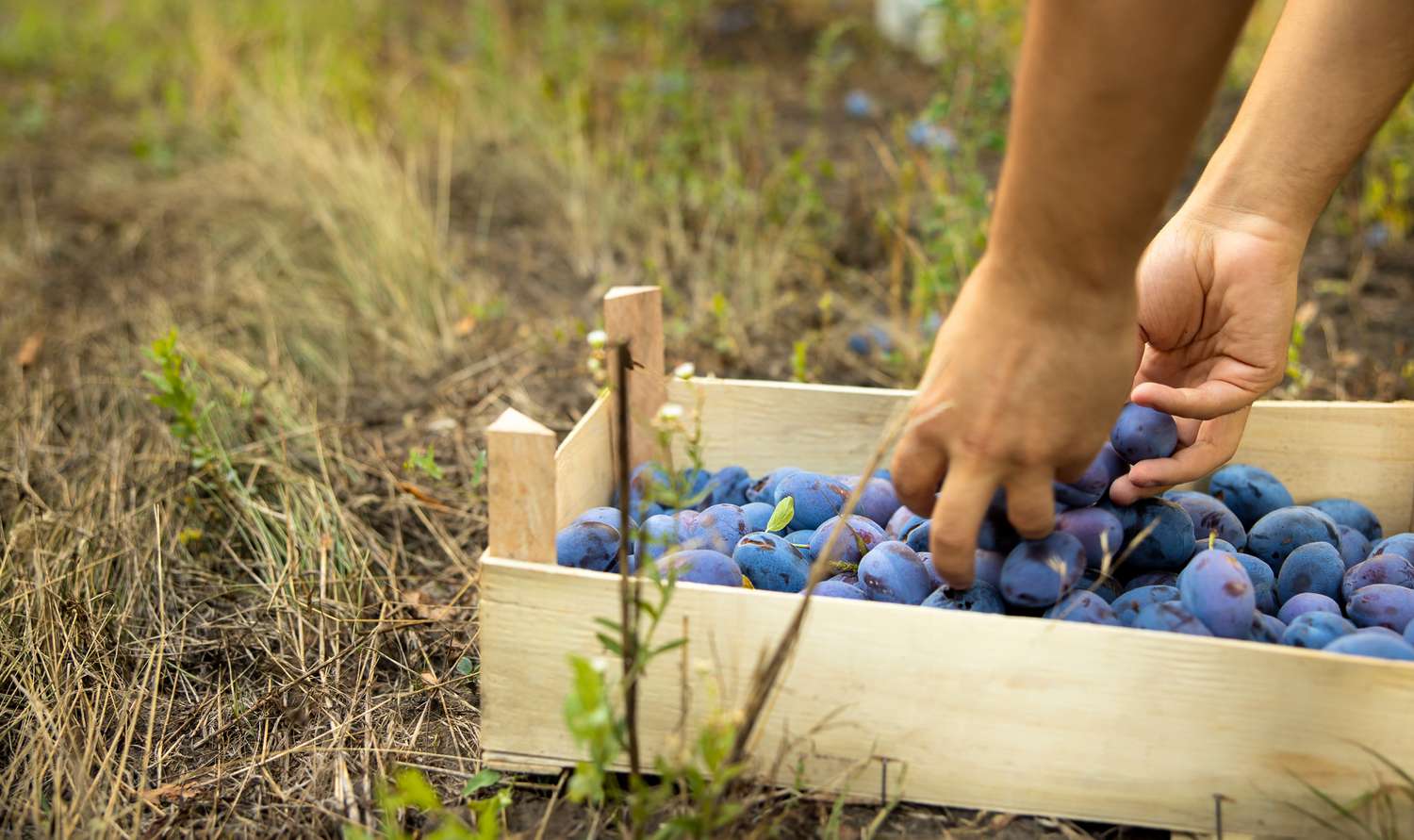
Prunes are made from specific varieties of plums. Naturally sweet and highly nutritious, prunes and prune juice are traditionally known as a remedy for constipation.
Rich in fiber, potassium, vitamin K, and phenolic compounds, prunes offer many potential health benefits, including improved bone mineral density, heart health, and more.
Read on to learn the nutritional benefits of plums, prunes, and prune juice, their health benefits, and how to eat them.
Viorel Poparcea / Getty Images
What’s Better, Prunes or Plums?
Prunes are made by drying specific varieties of plums. All prunes are made from plums, but not all plums can become prunes. Neither is better, but they are different.
Both prunes and plums have an impressive nutritional profile. They contain virtually no sodium, saturated fat, and cholesterol. Prunes may offer slightly more micronutrients, calories, and sugar when compared to weight since they are a concentrated source of plum.
Prunes and plums contain vitamin K, potassium, fiber, phenolic compounds, and other B vitamins. However, you would have to eat more plums than prunes to get the same amounts of certain nutrients.
Plums also contain more vitamin C than prunes. Yet prunes have a longer shelf life, which may lead to less food waste.
Prune Benefits: Fresh vs. Dried vs. Juice
Some people call plums fresh prunes. Dried plums are called prunes, and prune juice is made from heated prunes. Prunes are made from plum varieties that are free stones, which are plums whose pit is easy to remove.
Fresh Plums
While there are some studies on the benefits of prunes (or dried plums), there is limited research investigating the health benefits of fresh plums. Still, plums contain antioxidants called anthocyanins, vitamin C, fiber, and other plant-based compounds. They also have a low glycemic index (a rating system for foods containing carbohydrates), making them a good choice for people who need to manage their blood sugar.
Prunes (Dried) and Prune Juice
Prunes and prune juice are widely known for their laxative effect and digestive health benefits. This is attributed to their dietary fiber (soluble and insoluble) content and phenolics, like chlorogenic acid and sorbitol, found in the fruit.
Prunes are an excellent source of vitamin K and potassium and also provide boron. This trace mineral aids in the metabolism of calcium, magnesium, and vitamin D. These nutrients play a critical role in maintaining healthy bones. Research suggests that consuming about five to six prunes daily prevents the loss of bone mineral density in postmenopausal women with osteopenia(low bone density caused by bone loss).
Prunes may also offer heart and weight loss benefits by potentially increasing good cholesterol and promoting feelings of satiety.
Prune Nutrition Facts: One Serving
Five pitted prunes, which are roughly equal to 50 grams (g) are 115 calories and are an excellent source of vitamin K, fiber, and potassium. The following nutrition information is provided by the U.S. Department of Agriculture (USDA):
Prune Nutrition Facts (5 prunes)
- Calories: 115
- Fat: 0.2 g
- Sodium: 0.95 milligrams (mg)
- Carbohydrates: 30.5 g
- Fiber: 3.4 g
- Sugars: 18.1 g
- Protein: 1.1 g
- Vitamin K: 28.25 micrograms (mcg)
- Potassium: 347.5 mg
- Calcium: 20.4 mg
Plum Nutrition Facts (1 plum)
- Calories: 30
- Fat: 0.2 g
- Sodium: 0 mg
- Carbohydrates: 7.5 g
- Fiber: 0.9 g
- Sugars: 6.6 g
- Protein: 0.5 g
- Vitamin C: 6.27 mg
- Vitamin K: 4.22 mcg
- Vitamin A: 11.2 mcg
Downsides of Prunes
Compounds in prunes (sorbitol and fiber) stimulate bowel movements, which can cause digestive issues in some people. If you are not used to eating a high-fiber diet or consuming prunes, increase your intake slowly and drink adequate amounts of water. Experts recommend:
- Two prunes/day for three days: One prune after breakfast and one after dinner
- Four prunes/day for four days: One prune after breakfast, one after lunch, and two after dinner.
- Five prunes/day for four days: Two prunes after breakfast, one after lunch, and two after dinner.
- Six prunes/day: Two prunes after breakfast, two after lunch, and two after dinner.
There may also be a risk of exposure to acrylamide, which forms naturally from chemical reactions in certain starchy foods (like french fries and potato chips) from high-heat cooking. Acrylamide is classified as a probable human carcinogen (cancer causing agents).
Acrylamide levels in prunes are much lower than in foods fried or cooked in high heat for a long time. For most people, cigarette smoke is the primary potential source of acrylamide exposure. It’s unclear if the acrylamide levels in foods raise cancer risk. However, more research is needed.
Choosing Quality Prunes
Prunes are typically purchased in containers or resealable bags to maintain freshness. Because of this, you may not see them before purchasing. However, if you can lay eyes on them before buying, look for shiny fruits with rich, deep color, plump, and free of blemishes and mold. The texture should be soft.
How to Add Prunes to Your Diet
There are simple ways to add prunes to your meals, including:
- Chop prunes and add them to your morning oats, chia pudding, or smoothies.
- Combine a few prunes with a handful of unsalted nuts.
- Use prunes in baked goods like muffins, snack bars, and breads.
- Make prune paste or puree by blending up pitted prunes with hot water.
Summary
Plums, prunes, and prune juice are sweet, delicious, and nutritious food choices you can add to your dietary regimen. Doing so will increase your intake of essential nutrients, including plant-based compounds, vitamins, and minerals.
Rich in fiber, potassium, and vitamin K, prunes may help improve bone mineral density, heart health, and more. Snack on fresh plums, add chopped prunes to morning oats, or prune juice to smoothies. Or use prunes as a nutrient-dense sugar substitute in baking to add fiber, sweetness, and color.
